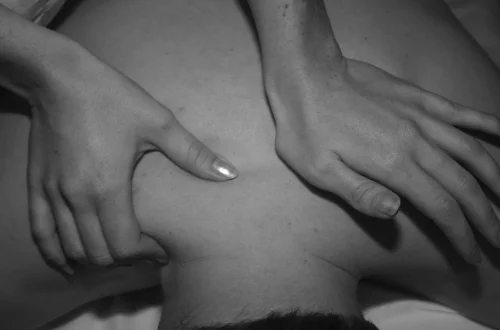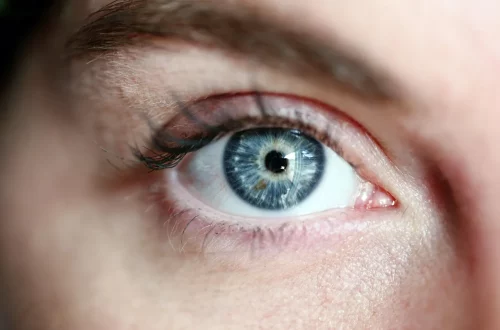
Understanding Why My Clit Hurts and How to Find Relief
Understanding discomfort in the clitoral region is essential for many individuals who may experience this sensitive issue. The clitoris, a small but significant part of the female anatomy, plays a crucial role in sexual pleasure and overall genital health. However, discomfort or pain in this area can be distressing and can stem from a variety of causes. It’s important to recognize that pain is a signal from the body, often indicating that something requires attention.
Discomfort can arise from physical factors such as infections, irritation, or injuries, as well as psychological influences like anxiety or stress. Understanding the underlying reasons for clitoral pain can help individuals take appropriate steps towards relief and restoration of comfort. Many may feel hesitant to discuss these issues due to societal taboos surrounding female sexuality and health, but seeking knowledge and support is a vital part of addressing the problem.
Being informed about potential causes of discomfort, recognizing symptoms, and understanding when to seek medical advice can empower individuals to take control of their health. This exploration into the factors contributing to clitoral pain aims to provide clarity and encourage a proactive approach to personal well-being.
Common Causes of Clitoral Pain
Clitoral pain can arise from a multitude of causes, some of which are more common than others. One prevalent cause of discomfort is vulvodynia, a chronic pain condition affecting the vulva, which can include the clitoris. This condition is often characterized by burning, stinging, or aching sensations and may occur without any identifiable trigger. It’s essential for individuals to recognize that vulvodynia is a medical condition that requires proper diagnosis and management from a healthcare professional.
Another common cause of clitoral pain is irritation or inflammation due to allergic reactions or infections. For instance, yeast infections or bacterial vaginosis can lead to significant discomfort in the genital area. Symptoms often include itching, abnormal discharge, or a foul odor, which can cause additional distress. In these instances, appropriate treatment, such as antifungal or antibiotic medications, will often alleviate the discomfort.
Physical trauma or friction can also lead to clitoral pain. Activities such as vigorous sexual intercourse, excessive masturbation, or even the use of tight-fitting clothing can cause irritation and soreness. It’s crucial to pay attention to the body’s signals in these situations, allowing for adequate rest and healing. Adjusting sexual practices or clothing choices can contribute to reducing discomfort.
Lastly, psychological factors such as anxiety, stress, or past trauma can also manifest as physical pain in the clitoral region. Emotional well-being is deeply intertwined with physical health, and addressing psychological issues through therapy or counseling can be beneficial. Recognizing the mind-body connection is essential for comprehensive care.
When to Seek Medical Attention
Understanding when to seek medical attention for clitoral pain is crucial for maintaining health and well-being. While occasional discomfort may not always indicate a serious issue, persistent or severe pain warrants professional evaluation. If clitoral pain lasts for more than a few days or is accompanied by other symptoms such as fever, unusual discharge, or swelling, it is advisable to consult a healthcare provider.
Additionally, if the pain significantly impacts daily life, sexual activity, or emotional well-being, seeking help is essential. It’s important to prioritize self-care and advocate for one’s health, as ignoring symptoms may lead to further complications or chronic conditions.
During a medical consultation, individuals should be prepared to discuss their symptoms openly and honestly. This may include describing the pain’s intensity, duration, and any associated symptoms. Providing a comprehensive history can assist healthcare providers in diagnosing the issue accurately.
Diagnostic tests, such as pelvic exams, cultures, or imaging studies, may be necessary to determine the underlying cause of the pain. Based on the diagnosis, treatment options can range from lifestyle changes and over-the-counter medications to prescription medications or even surgical interventions in rare cases.
Empowerment through knowledge and open communication with healthcare professionals can lead to effective treatments and a better understanding of one’s body. It’s essential to remember that each individual’s experience with pain is unique, and appropriate care is vital for recovery.
Self-Help Strategies for Relief
For individuals experiencing clitoral pain, there are several self-help strategies that may provide relief. First and foremost, practicing good hygiene is essential. Keeping the genital area clean and dry can help prevent infections and irritation. Gentle washing with mild soap and water, along with avoiding harsh chemicals or fragrances, is advisable.
Applying a cold compress can also offer temporary relief from discomfort. The cold can reduce inflammation and numb the area, helping to alleviate pain. It’s important to apply the compress for short periods and ensure that it is wrapped in a cloth to prevent direct contact with the skin.
Additionally, exploring relaxation techniques can be beneficial. Stress and anxiety can exacerbate pain, so practices such as deep breathing, meditation, or yoga may prove helpful. Engaging in activities that promote relaxation and well-being can foster a supportive environment for healing.
Lubrication during sexual activity is another crucial consideration. If friction is a contributing factor to clitoral pain, using a high-quality water-based lubricant can reduce irritation and enhance comfort. Communicating with partners about comfort levels and preferences is vital for a positive and pain-free experience.
Lastly, maintaining a healthy lifestyle through regular exercise, a balanced diet, and adequate hydration can support overall genital health. Hormonal changes, particularly during menstruation or menopause, can also impact sensitivity and discomfort levels. Therefore, tracking menstrual cycles and discussing any hormonal concerns with a healthcare provider can be beneficial.
Understanding the Psychological Impact
The psychological impact of clitoral pain should not be underestimated. Experiencing discomfort in such an intimate area can lead to feelings of anxiety, frustration, or embarrassment. These emotions can further exacerbate the physical sensations, creating a cycle that is challenging to break.
Open communication with partners about experiences and feelings can help alleviate some of the emotional burden. Support from loved ones can create a safe space for discussing discomfort and seeking solutions together. Seeking professional counseling or therapy may also be beneficial for individuals struggling with anxiety or past trauma related to sexual experiences.
Education plays a vital role in addressing the psychological aspects of clitoral pain. Understanding that pain is not a reflection of one’s worth or femininity can empower individuals to seek help without shame. Engaging in community support groups or online forums can provide validation and shared experiences, allowing individuals to feel less isolated in their struggles.
Mindfulness practices can also assist in managing the psychological impact of pain. Techniques such as mindfulness meditation or cognitive behavioral therapy (CBT) can help individuals reframe their thoughts around discomfort, fostering a healthier mindset.
Recognizing the interplay between physical and mental health is crucial for holistic care. By addressing both the physical symptoms and the emotional responses, individuals can work towards a more comprehensive approach to healing.
**Disclaimer:** This article is for informational purposes only and should not be considered medical advice. If you are experiencing health problems, please consult a healthcare professional for proper diagnosis and treatment.




